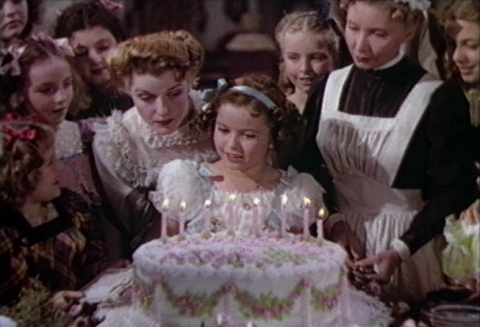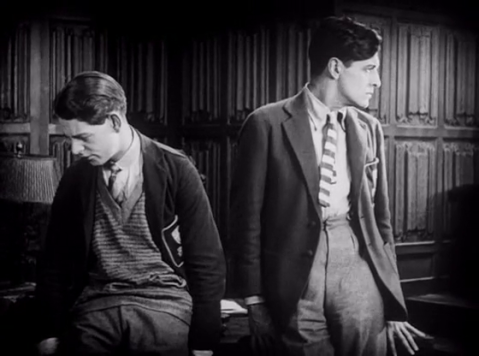Only a handful of Hollywood actors from the 1930s are as well remembered today as Shirley Temple, the cutesey child actor, adored by everyone. At the ripe age of ten, Temple made the film The Little Princess. No-one knew it yet, but already her star was waning. The Little Princess was one of her last major successes.
The Little Princess is basically the story of Cinderella, with a few twists thrown in. Shirley plays the girl Sara, whose mother is dead and whose father is going into war. He leaves her to a fine boarding school, where she quickly becomes the mistress’ favourite, and the envy of the other girls. She also gets a few friends among the staff. But things take a sudden turn for the worse when her father is reported dead. All her nice things are taken away, and she is forced to work off her father’s debts.
Today, The Little Princess may seem a bit overly cute and sentimental, and Shirley Temple may seem just a little bit too perfect with her smiles and mannerisms. Ah, but she is gorgeous at the same time. She basically makes the entire film, although several of the adult actors are also very good, and the whole piece is exquisitely well produced from beginning to end.
This film is best enjoyed if you want to discover Shirley Temple, arguably the most celebrated child star in all of Hollywood. If you like this film, there is a good chance that you will also like Little Lord Fauntleroy (1936), also available at the Internet Archive. Though Shirley Temple is not in that one.
The Little Princess
Download link
Year: 1939
Running time: 1 h 33 min
Director: Walter Lang
Stars: Shirley Temple
Image quality: Good
Resolution: Medium (653×446; not counting black border)
Sound quality: Good
Best file format: MPEG2 (3.1 G)





